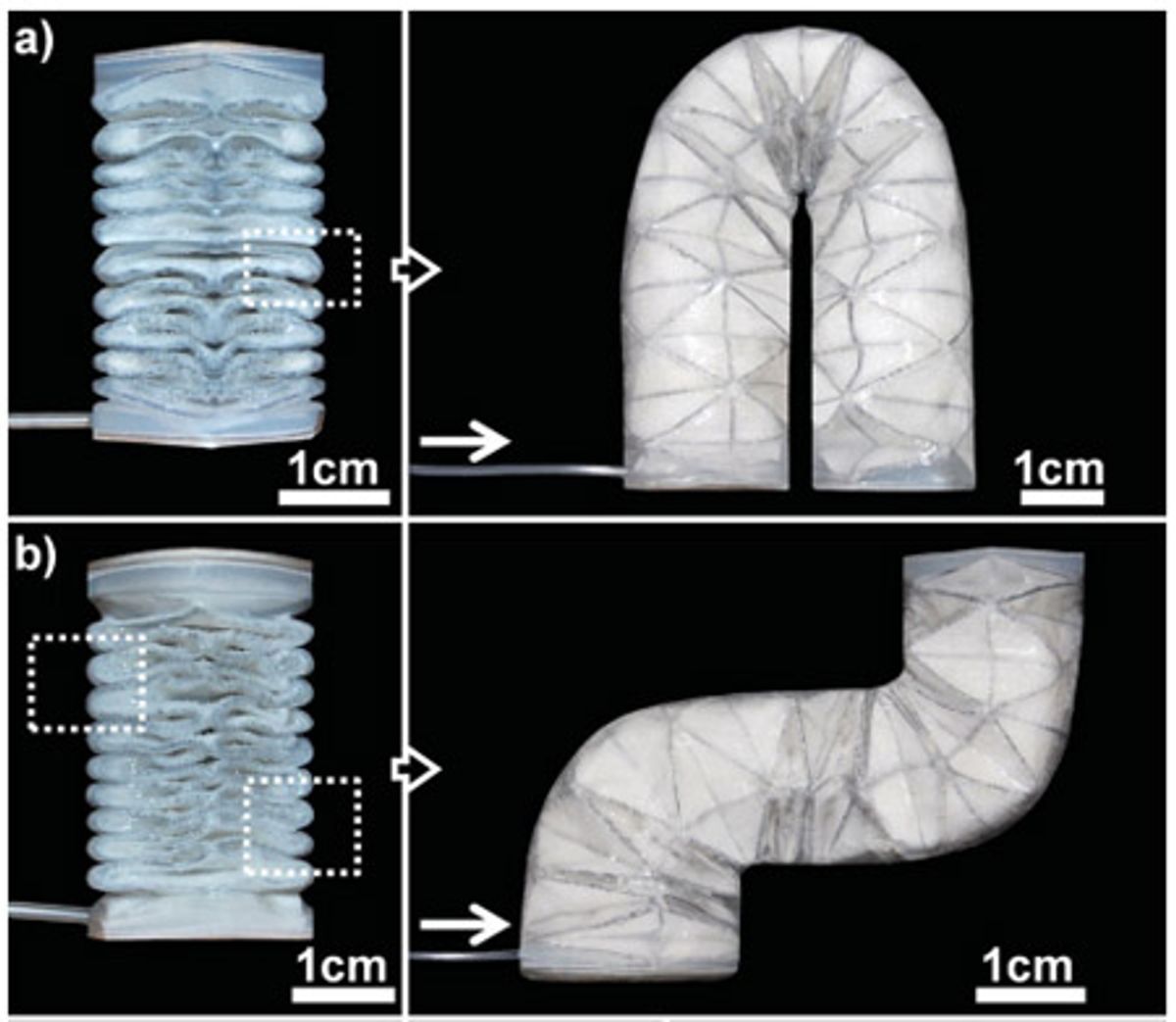You remember that freaky air-powered boneless robot, right? Well, the same group that unleashed that thing on the world (George M. Whitesides' lab at Harvard) has started to manufacture these beautiful (and superbly functional) air-powered origami robotic actuators out of paper and elastic.
These "soft pneumatic actuators" are constructed by combining paper with a silicone elastomer called Ecoflex in a mold and casting the composite so that they contain internal pneumatic networks. The process is fast, easy, inexpensive, and repeatable. When the pneumatic networks are inflated with an external source of air, the elastomer expands, creating an actuator.
The key to the funky shapes that these actuators can make is to use paper to constrain the ways in which the elastomer can bend. The simplest form of this is to just place a piece of paper along one side of the elastomer such that when it's inflated, it bends the other way. But, there are lots of creative things that you can do with paper. The examples in the pictures above show pneumatic actuators made of accordion-folded paper/elastomer composites that have had certain folds glued together to generate specific shapes when they inflate. And here's an extension actuator lifting a 1 kilogram weight (2.2 pounds), which is over 100 times the weight of the actuator itself:
Without the weight on top, an actuator like this can fully deploy at approximately the speed of sound. The researchers have also tested structures that can contract, twist, and even act as little lanterns by controlling the amount of light emitted by an embedded LED through aluminum panels:
This last example illustrates how it's also possible to embed electronics in these actuators, suggesting the possibility of creating an entire robot from little more than paper, silicone, and wiring. You'd need a pressure source too, but it might be possible to use chemical reactions to generate gas from relatively small amounts of liquids that could themselves be stored in flexible containers within the robot.
The advantages of robots constructed with methods like these are numerous: They're simple to make, flexible, expandable, lightweight, and cheap enough that you could make a whole bunch of them if you wanted to. There's a reason that DARPA has a whole program dedicated to these soft robots: They can do all kinds of things (and go all kinds of places) that rigid robots just can't, and with actuators like these, nothing will be able to stop them.
Nothing.
"Elastomeric Origami: Programmable Paper-Elastomer Composites as Pneumatic Actuators" by R. V. Martinez, C. R. Fish, X. Chen, and G. M. Whitesides appears in the current issue of Advanced Functional Materials, and you can read it in full at the link below.
[ Paper ] via [ Wired ]
Evan Ackerman is a senior editor at IEEE Spectrum. Since 2007, he has written over 6,000 articles on robotics and technology. He has a degree in Martian geology and is excellent at playing bagpipes.






